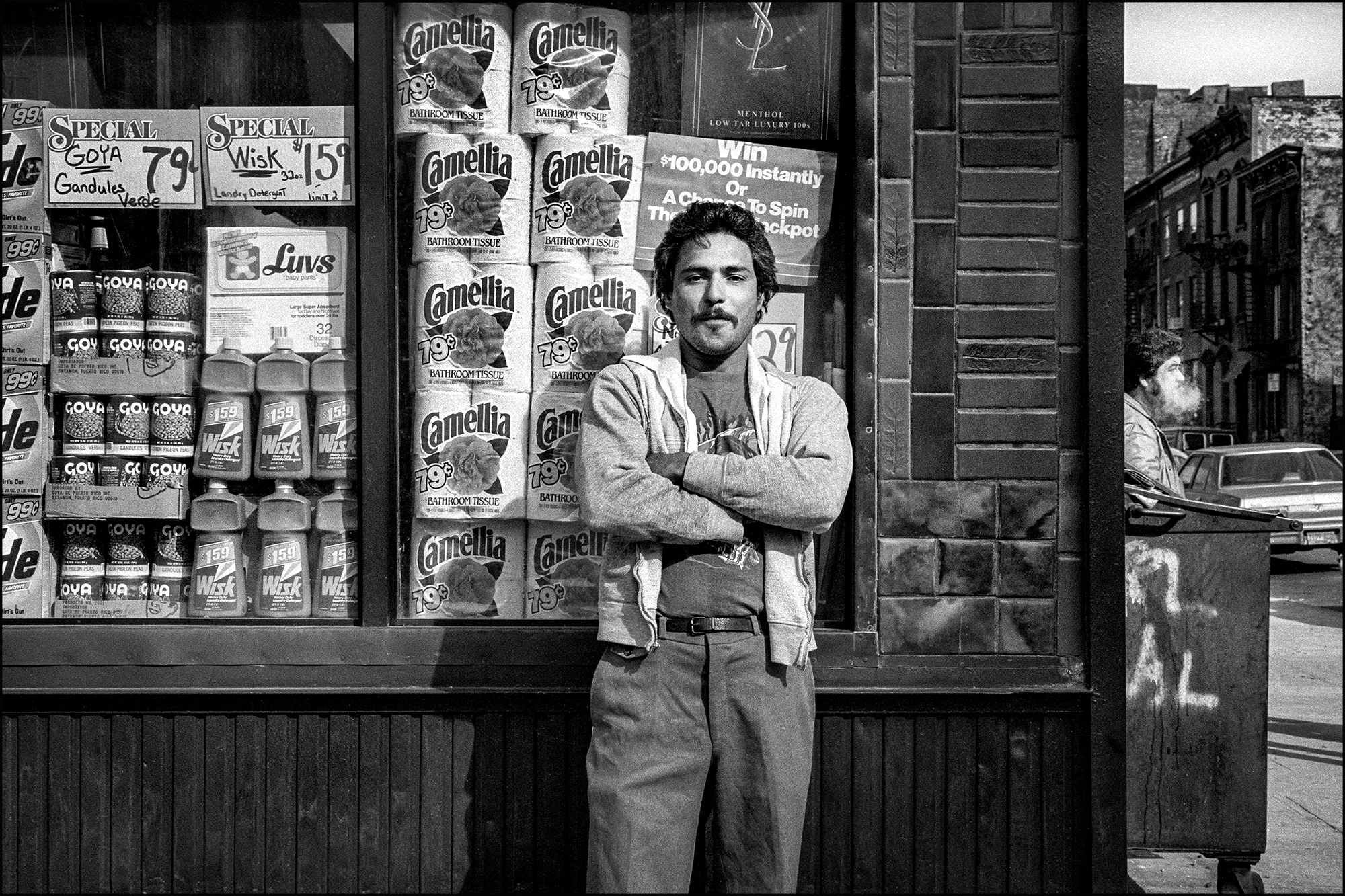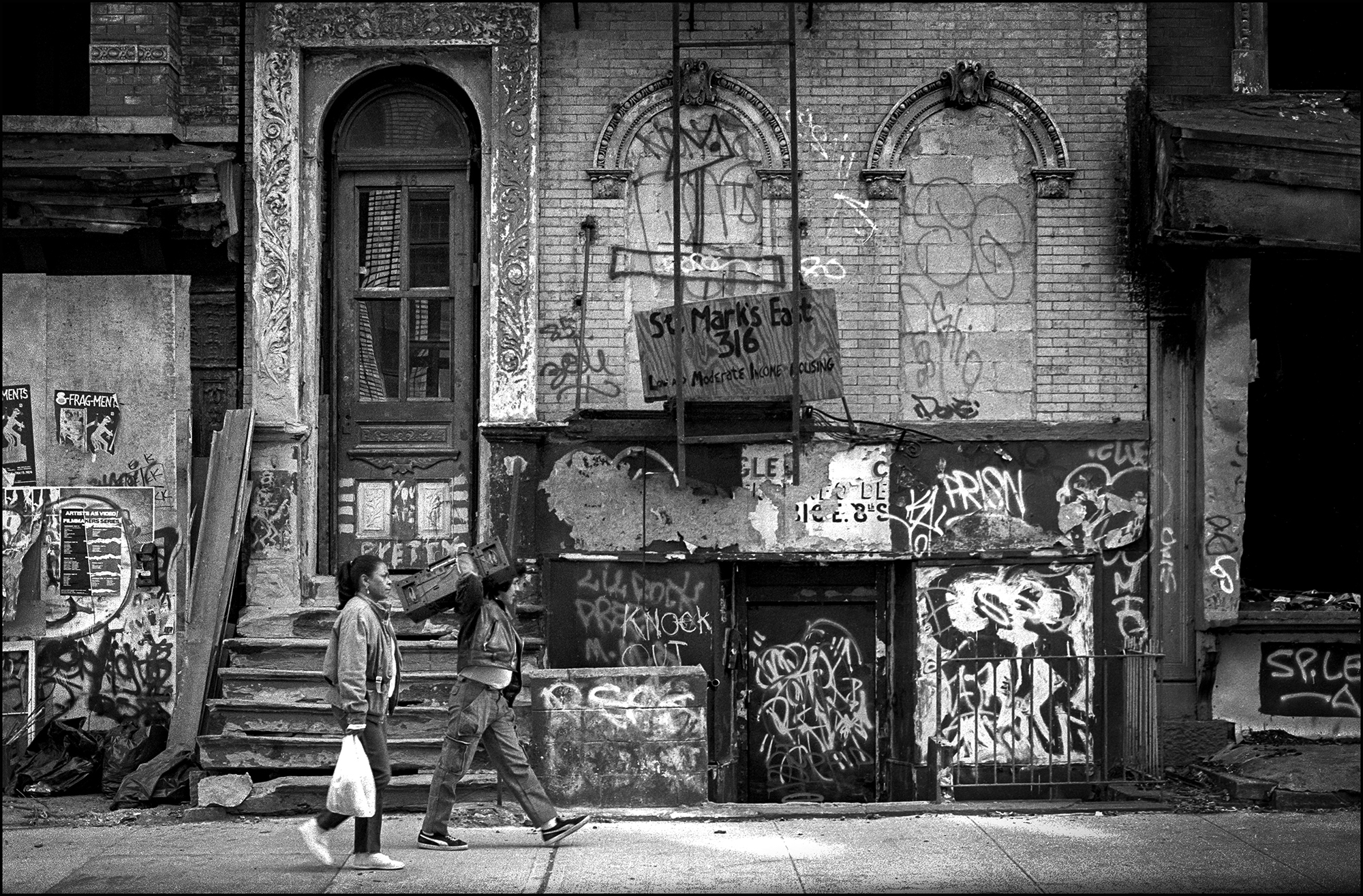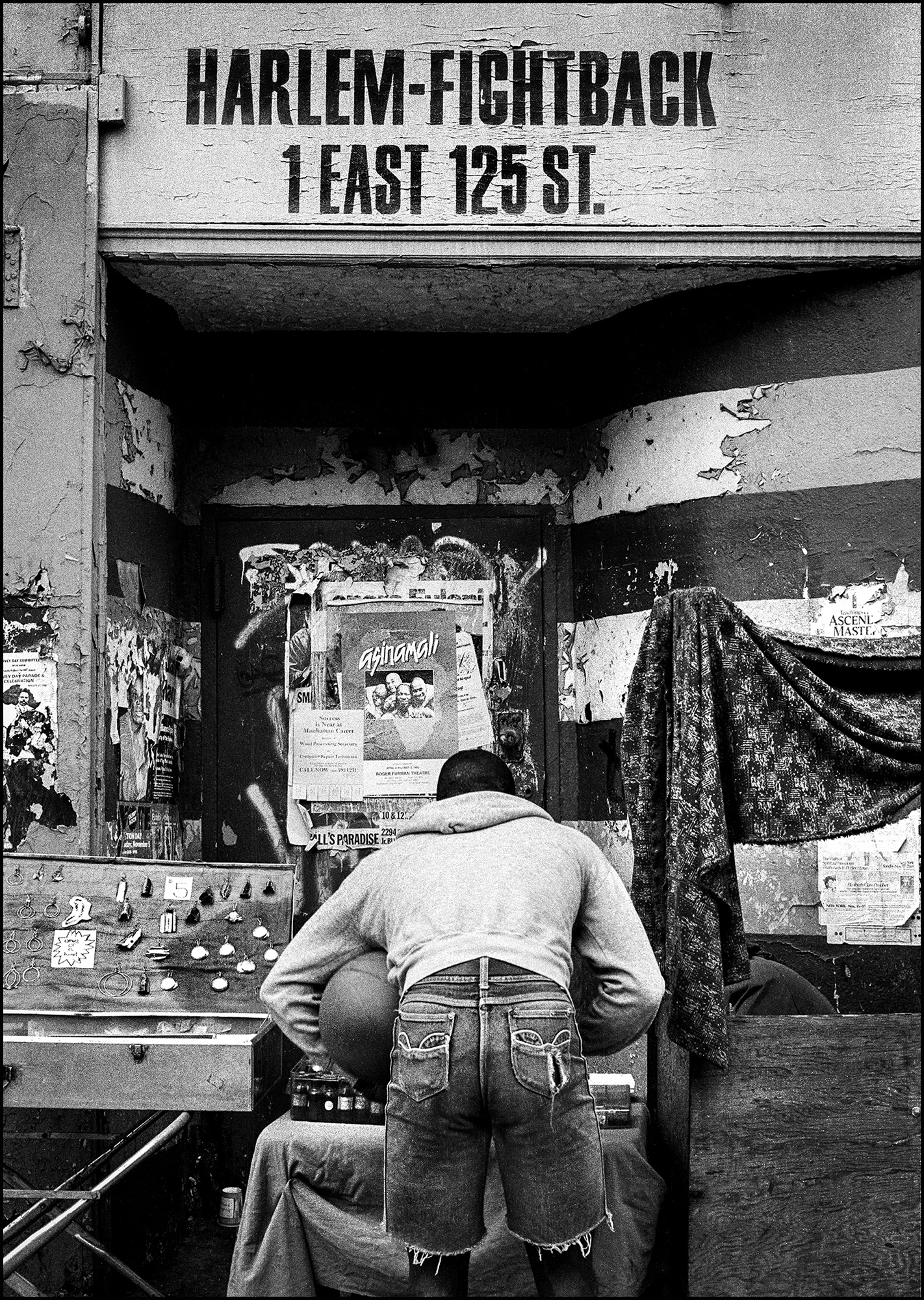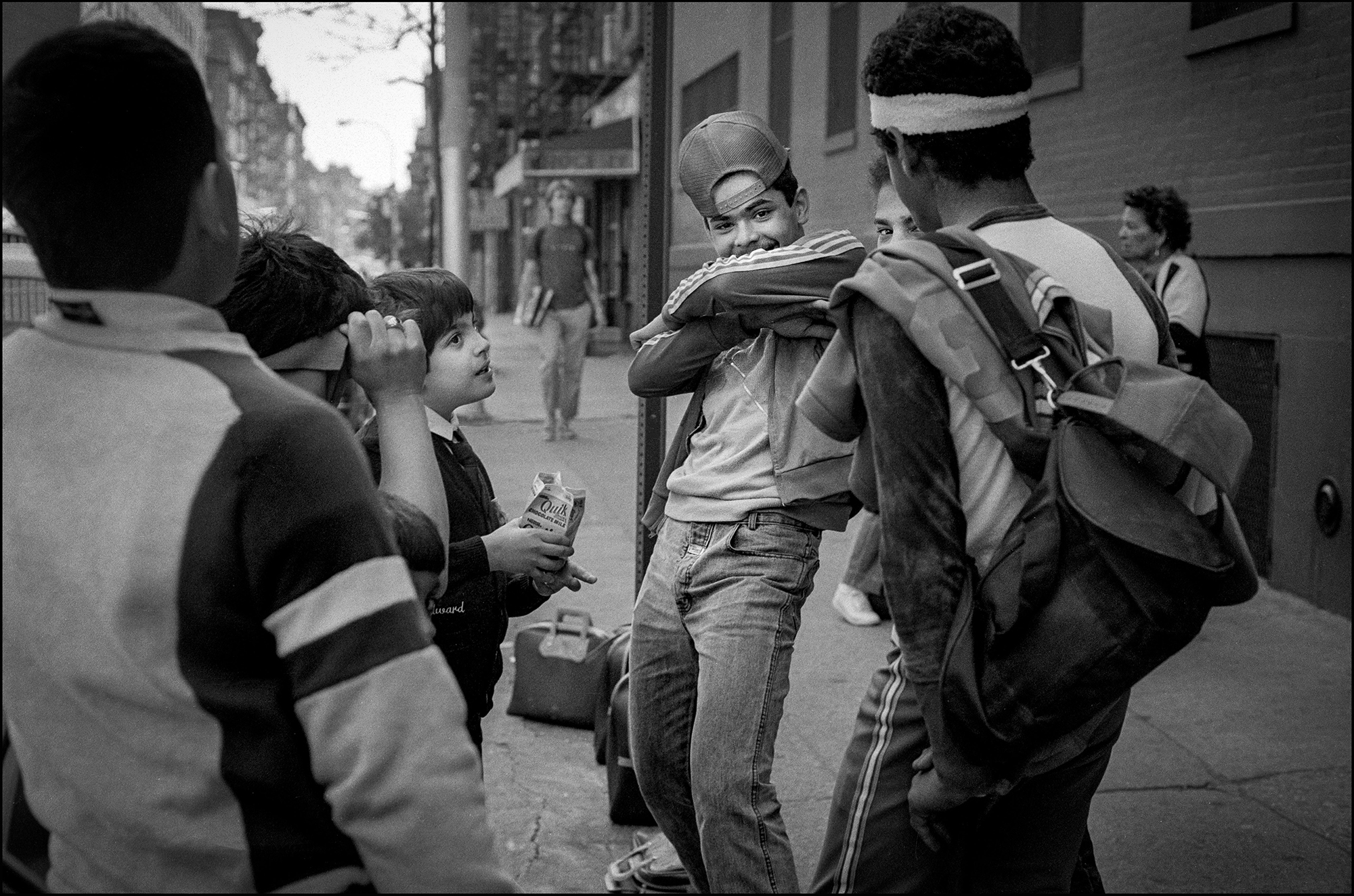Growing up in Leeds during the 1960s and 70s, photographer Jacky Chapman remembers paging through her father’s Royal Navy photo album, gazing upon images of far-flung locations all around the world and dreaming of an escape of her own.
“My dad left school at 15 and started off as an apprentice joiner and gravedigger for an undertaker in his village, but adventure was running high in his blood. He realised there was more to the world than Leeds,” Jacky says. “For seven years he sailed the high seas and would tell stories of waves as big as mountains and how the ship would ride head-on into the storm to avoid being battered.”
Jacky remembers stumbling upon a postcard her father sent to his parents in 1958, which showed the New York skyline and immediately set her sights on a trip of her own. “Dad would talk of skyscrapers reaching the heavens and how Times Square was lit up with a million lights,” she says. “He would laugh as he recalled the yelling and swearing of the New Yorkers in the streets and how they spoke so fast and said ‘cawfeee’ rather than coffee. He would talk about pretzels and root beer, which I had absolutely no concept of, but hoped that one day I would taste them too.”

At the age of nine, Jacky began saving 50p every week for the trip of her dreams, her obsession with America continuing to grow as a teen. On Saturday nights, the family gathered around the TV for their weekly ritual of American “copaganda” shows like Miami Vice, Hawaii Five-O, The Rockford Files and The Streets of San Francisco; endless cups of strong Tetley tea and Mr. Kipling Battenburg cakes.
“New York was presented as the dark, crime-ridden city, oozing tension and drama, a blend of urban realism, character-driven storytelling and style,” Jacky, who papered her bedroom wall with Starsky & Hutch and Kojak posters, says. “But it wasn’t just about the crimes; it was the location, music, cars, culture, street style and the gritty atmosphere of New York that fascinated me, a stark contrast to my Leeds upbringing.”

Dazzled by the grit and glitter of their mythos and majesty, Jacky found the high-voltage shows the perfect escape from the harrowing state of the UK in the 70s and 80s. “I was surrounded by the stark realities of social inequality characterised by economic and labour-related issues: the three-day week, power cuts and electricity rationing,” she says. “I can remember using candles to do my homework and walking past rubbish that was piled high in the streets as the bin men were on strike. As I moved into my teenage years, the Yorkshire Ripper’s reign of terror began, instilling fear and panic in my hometown.”
In 1986, Jacky got the chance to transform her childhood dream into a reality. As a photography student embarking on her MA, she deftly folded a trip to the States into an ambitious thesis that would explore the stark class divides in New York and Los Angeles. Drawing inspiration from the street photography of Garry Winogrand, Bruce Davidson and Weegee, Jacky set forth on the adventure of a lifetime, crafting a portrait of the city collected in the new book New York 1986 (Café Royal Books).
Jacky arrived in New York on the first day of May, ready to embark on a bi-coastal journey split over the course of just 20 days. She kept a journal, recording her memories of the city that towered overhead. Swept away by the relentless and frenetic energy of street life, she describes a feeling of vulnerability she felt in neither London nor Leeds.

“I felt like Dorothy as she got caught up in the storm and was transported to the mythical land of Oz!” she remembers. “The feeling was electrifying but spattered with trepidation. High energy levels but terrified of street photography, of getting shouted at or approaching people. I struggled daily, chastising myself for not getting certain pictures and not getting close enough. I was still a student and so much more to learn. But amid the uncertainty, there was an undeniable excitement as I walked those streets, feeling a rush of anticipation at every street turn.”
On 4 May, Jacky travelled to the Lower East Side at a time when few dared to venture east of Avenue A. Like Jacob A. Riis, who walked these same streets a century before to create the seminal photography book, How the Other Half Lives, Jacky bore witness to the ravages of a neighbourhood that had been all but destroyed by government policy, landlord-sponsored arson, poverty and addiction.
“Prior to my arrival, I had the preconception that all of New York must be plagued by crime. However, that turned out to be far from the truth,” she says. “Yes, certain areas had a roughness to them, like a diamond in the rough. I found myself more comfortable in Harlem than on Fifth Avenue, perhaps due to my working-class roots.”

Although apprehensive about approaching strangers for a photograph, Jacky quickly found New Yorkers were far more open than reputation allowed. “Most were eager to chat, amused by my British accent and often asked if I knew the Queen or a distant relative of theirs that lives in London,” she says.
Jacky had just one unfortunate incident: a run-in with a mugger while photographing the New Yorker Hotel in Hell’s Kitchen during the evening. Fortunately, a deluge of raw emotion kept her safe — in the flood of her tears, the would-be thief relented and introduced himself as “Friendly”, a moniker well earned.
“Streetwise, the atmosphere could change quickly as you turned a corner, forcing you to make quick decisions about whether to keep the camera visible or hide it away,” Jacky remembers. “I always thought I was discreet, but in reality, I probably stood out like a sore thumb, with my red hair piled atop of my head like a bird’s nest! But making images is about wandering, ambling, and occasionally losing your way. This is when you may find your best shots, where the magic happens.”
‘New York 1986’ by Jacky Chapman is out now via Café Royal Books


Credits
All photography © Jacky Chapman

